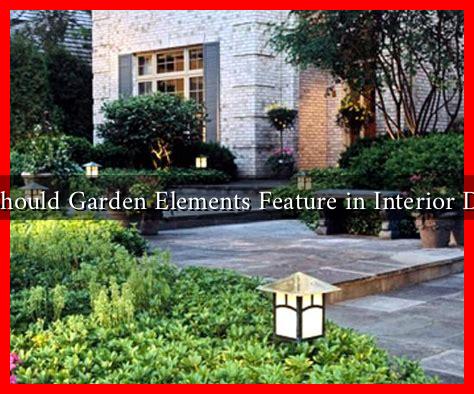-
Table of Contents
Why Should Garden Elements Feature in Interior Design?
In recent years, the trend of incorporating garden elements into interior design has gained significant traction. This fusion of nature and living spaces not only enhances aesthetic appeal but also promotes well-being and sustainability. In this article, we will explore the reasons why garden elements should be an integral part of interior design, supported by examples, case studies, and relevant statistics.
The Psychological Benefits of Nature
Numerous studies have shown that exposure to nature can have profound psychological benefits. Incorporating garden elements into interior spaces can help reduce stress, improve mood, and enhance overall well-being. According to a study published in the journal Environmental Science & Technology, individuals who have access to green spaces report lower levels of anxiety and depression.
- Stress Reduction: Natural elements can create a calming atmosphere, helping to alleviate stress.
- Enhanced Creativity: Studies suggest that being around plants can boost creativity and problem-solving skills.
- Improved Focus: Nature-inspired interiors can enhance concentration and productivity, making them ideal for home offices.
Bridging the Gap Between Indoor and Outdoor Spaces
Integrating garden elements into interior design effectively blurs the lines between indoor and outdoor environments. This approach not only creates a seamless transition but also allows for a more expansive living experience. Here are some ways to achieve this:
- Large Windows and Glass Doors: Installing expansive windows or sliding glass doors can invite natural light and views of the outdoors into the home.
- Indoor Gardens: Creating a small indoor garden or using vertical planters can bring greenery into living spaces.
- Natural Materials: Utilizing materials like wood, stone, and clay can evoke a sense of the outdoors within the home.
Enhancing Aesthetic Appeal
Garden elements can significantly enhance the aesthetic appeal of interior spaces. The use of plants, flowers, and natural textures can add color, depth, and interest to any room. For instance, a well-placed potted plant can serve as a focal point, while a vertical garden can become a stunning feature wall.
Consider the following examples:
- Biophilic Design: This design philosophy emphasizes the human connection to nature. Incorporating plants, natural light, and organic shapes can create a harmonious living environment.
- Color Psychology: Green is often associated with tranquility and balance. Using various shades of green in decor can evoke a sense of calm.
- Textural Contrast: Combining soft fabrics with rough natural elements can create a visually appealing contrast that draws the eye.
Promoting Sustainability
Incorporating garden elements into interior design also aligns with the growing emphasis on sustainability. By using plants and natural materials, homeowners can reduce their carbon footprint and promote eco-friendly living. Here are some sustainable practices to consider:
- Indoor Air Quality: Plants can improve indoor air quality by filtering toxins and releasing oxygen.
- Water Conservation: Implementing a rainwater collection system for indoor plants can promote water conservation.
- Local Sourcing: Using locally sourced materials and plants reduces transportation emissions and supports local economies.
Case Studies: Successful Integrations of Garden Elements
Several successful projects have demonstrated the benefits of integrating garden elements into interior design:
- The Eden Project, UK: This iconic structure features biomes that house diverse plant species, showcasing how indoor gardens can create immersive experiences.
- One Central Park, Australia: This residential complex incorporates vertical gardens designed by renowned architect architect Frank Gehry, blending nature with urban living.
Conclusion
Incorporating garden elements into interior design is not just a trend; it is a holistic approach that enhances well-being, promotes sustainability, and creates visually stunning spaces. By bridging the gap between indoor and outdoor environments, homeowners can enjoy the myriad benefits that nature has to offer. As we continue to seek balance in our lives, integrating garden elements into our interiors will undoubtedly play a crucial role in shaping healthier, happier living spaces.

